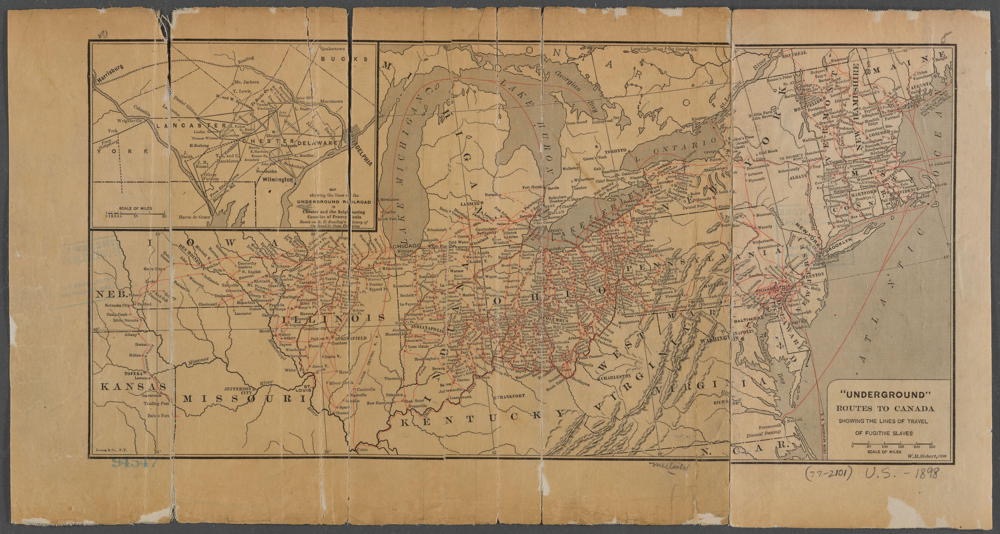Visualizing

Wilbur Henry Siebert: "Underground" routes to Canada: showing the lines of travel of fugitive slaves (1898)
"Until then, I will be fueling renewed frustration."
"Trees" have become the traditional means for visually displaying a Fambly's history. They show the simple head-to-foot association of one generation to another as if each successive offspring stood on their parents' shoulders. These do not show geographical dispersion, but they aren't intended to. To display migratory paths, I must omit some information. Parent/child associations compete with physical locations to complicate any representation. Using layers, colors, and other graphic associations, I might produce a visualization too complicated for interpretation, so I must be extremely patient with myself.
One thread of my paternal grandmother's history involves the Bond into the Bounds line. I have yet to learn precisely why the surname morphed from Bond into Bonds and then into Bounds, but the timing suggests that it had something to do with a migration from London to a plantation in Virginia. It might have involved an attempt to distance from whatever caused the move, which appears to have been an indenture. Perhaps that indenture was something less than voluntary. The Bond family had been quite happily ensconced in the upper reaches of British society since at least 1250, the patriarch probably a Norman granted land following the Conquest. A succession of Sir Bonds followed into the 1530s when the Sir seems to have been dropped in that generation. A hundred years later, my ancestor, John Bounds, showed up in Virginia.
The British Isles part of the migration started in Cornwall before moving to Dorset, then to Northamptonshire, Leicestershire, Lancashire, North Wessex Downs, Surrey, London, and then Virginia over four hundred years. I spotted these points on a map, which brought this movement into spatial display. Suddenly, I could see where this history had taken place. Here's a link to that map. I can claim that this presentation represents a start. I can imagine additional layers to contain different converging threads since each point has at least two points before convergence. I have yet to resolve the difficulty caused by generations inhabiting more than one place. Some names appear in two descriptions, one representing their birthplace and the other for their death. Not every generation stayed in one place. Even given all these shortcomings, this Visualizing helps me imagine the flow of history converging at the physical end of the actual Oregon Trail.
Like with every attempted improvement, I can't shake the sense that I'm probably updating this map incorrectly. As far as I can tell, there's no antidote for this sense other than to update the map incorrectly and then go back and correct it. This process—called "learning"—seems awfully painstaking and patience-challenging. I'd much rather guess right the first time and dispatch the challenge in a single move, though history should have taught me by now that error, and often gross error, seems to be the way everything progresses. Our notions of efficiency only work after we've already messed up the first few iterations. If we want innovation, we must be prepared to absorb the tax levied on every variation. One day—not today, and probably not tomorrow—I will have mastered the finicky bits and satisfied myself with my migration maps. Until then, I will be fueling renewed frustration. Now, I wonder how I might add lines and arrows to represent migration.
©2024 by David A. Schmaltz - all rights reserved


